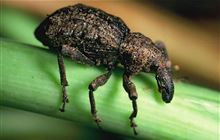New assessment of the conservation status of Chondrichthyans (sharks and rays) in Aotearoa New Zealand
Introduction
Have your say on any changes in status of Chondrichthyans (sharks and rays) in Aotearoa New Zealand. Consultation closed on 9 September 2024.This is a call for advice about any changes in status of Chondrichthyans (sharks and rays) in Aotearoa New Zealand, to inform a revision of the assessment for this group in the New Zealand Threat Classification System (NZTCS).
An expert panel will meet to review the classification of Chondrichthyans (sharks and rays) in Aotearoa New Zealand including use of supplied information.
View the current list giving the status of fifty-eight taxa in Duffy et al. 2018, Conservation status of New Zealand Chondrichthyans (sharks and rays) (PDF, 7,439K).
Data can be accessed on the NZTCS website at nztcs.org.nz.
Assessment criteria
An assessment will be made based on a scientific approach using two criteria:
- the size of the population or estimated area of occupancy
- the expected trend (amount of decline or increase) for each taxon (species, subspecies, variety, etc.), regardless of whether it is taxonomically determinate (having a formal scientific name) or indeterminate (having an informal ‘tag name’).
How to contribute
Consultation closed on 9 September 2024.
About the New Zealand Threat Classification System
The New Zealand Threat Classification System allows the classification of conservation status/risk of extinction of all organisms known to occur in a wild state in New Zealand.
This includes species that are:
- endemics
- non-endemic natives
- migrants
- vagrants
- introduced and naturalised.
It also includes taxa which have not been formally described.
The NZTCS is not a priority-setting system. It's a resource to support priority setting, among other functions.
Panels of experts from New Zealand’s scientific community decide conservation statuses by assessing:
- population size (number of breeding adults or the area of occupied habitat)
- forecast change in population size (over either the next three generations or 10 years, whichever is longer)
- whether the current state of the population is a result of human-induced effects.
Groups of organisms are assessed approximately every five years.
The assessments of each group of organisms, for example, birds, fungi, freshwater fishes, marine invertebrates, are published as scientific monograph series. These are considered part of the formal international scientific literature.
PDF copies of the assessment reports are publicly available on the DOC website at New Zealand Threat Classification System (NZTCS).
The assessment data are also publicly available on the NZTCS database.


